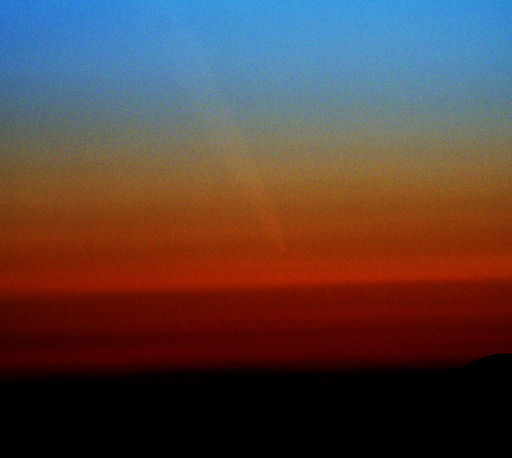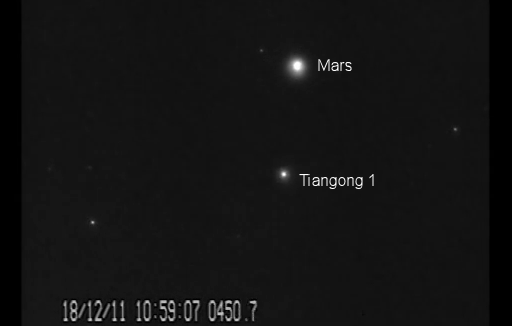Don't just watch shooting stars. Wear them! Authentic meteorite jewelry for Christmas is now available in the SpaceWeather Store. | | | COMET LOVEJOY IN THE MORNING: Noted astronomer John Bortle urges observers (especially in the southern hemisphere) to "begin searching for Comet Lovejoy's bright tail projecting up out of the morning twilight beginning at dawn. The tails of some of the major sungrazing comets have been extraordinarily bright. Comet Lovejoy's apparition has been so bizarre up to this point that it is difficult to anticipate just what might happen next ... [including] the exact sort of tail it might unfurl in the morning sky." UPDATE: This morning in New Zealand, Minoru Yoneto photographed the ghostly tail of Comet Lovejoy shining through the twilight: 
"I couldn't see the comet with my naked eye, but a 1.3 sec exposure with my Canon Kiss X2 digital camera revealed Lovejoy's long tail." In the clearer skies of Devonport, Tasmania, amateur astronomer Peter Sayers did see the tail with his unaided eyes--"but just barely," he says. "The tail was just naked-eye and perhaps a degree long in our Tasmanian summer early morning twilight." [image] The visibility of the tail could improve in the days ahead as the comet moves away from the sun and the background sky darkens accordingly. Early-rising sky watchers should be alert for this rare apparition. [finder chart] TIANGONG 1 AND MARS: This week, China's new space station, Tiangong 1, is making a series of bright passes through the morning skies of North America. On Dec. 18th, Kevin Fetter of Brockville, Canada, caught the 8.5-metric-ton spaceship flying past the planet Mars (video): 
Tiangong 1 is unoccupied now, but China is planning to send Taikonauts to visit the experimental station at least once and possibly twice in 2012. To prepare for their arrival, last Thursday automated systems onboard Tiangong 1 began a series of air quality checks inside the station's 15-cubic meter pressurized volume. Tiangong 1 is currently about as bright as the stars of the Big Dipper (a value that will approximately double when future spacecraft dock with it). To see it, check Spaceweather's Simple Satellite Tracker or your cell phone for local flyby times.
Dec. 10th Total Lunar Eclipse Gallery Potentially Hazardous Asteroids ( PHAs) are space rocks larger than approximately 100m that can come closer to Earth than 0.05 AU. None of the known PHAs is on a collision course with our planet, although astronomers are finding new ones all the time. On December 20, 2011 there were 1272 potentially hazardous asteroids. Notes: LD means "Lunar Distance." 1 LD = 384,401 km, the distance between Earth and the Moon. 1 LD also equals 0.00256 AU. MAG is the visual magnitude of the asteroid on the date of closest approach. | | The official U.S. government space weather bureau | | | The first place to look for information about sundogs, pillars, rainbows and related phenomena. | | | Researchers call it a "Hubble for the sun." SDO is the most advanced solar observatory ever. | | | 3D views of the sun from NASA's Solar and Terrestrial Relations Observatory | | | Realtime and archival images of the Sun from SOHO. | | | from the NOAA Space Environment Center | | | the underlying science of space weather | | 
